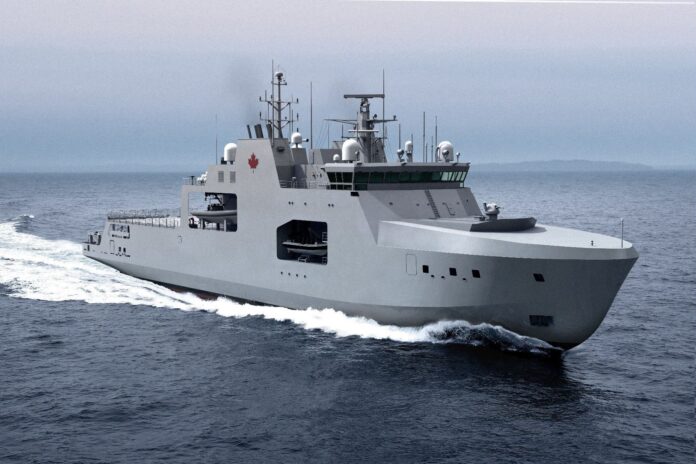On a cloudy day in September, Commander Nicole Robichaud looked ahead to the deep, blue water of the Arctic Ocean from the bridge of a brand new ship. Whitecaps and floating sea ice dotted the horizon.
The sixty-five crew members and sailors with the Royal Canadian Navy, were on board HMCS Margaret Brooke, one of six new icebreaker ships in Canada’s Arctic fleet. They travelled through some of the earth’s most unforgiving waters at the northernmost edge of North America.
The stark effects of the climate crisis and changing geopolitical landscape have created new threats in the Arctic. As the sea ice melts, previously impassable routes through the region and access to long-hidden natural resources are opening up.
Canada is one of eight nations with territorial claims in the Arctic, but hasn’t historically had a prominent surveillance presence until now.
Arctic security has been forced into the spotlight for the first time in a long time. A doomsday scenario of a Russian strike on North America, while still unlikely, no longer feels like a fantasy.
“We’re here doing our business, showing our sovereignty,” Robichaud told Global’s The New Reality. “We are here to protect our northern waters.”
An Operation Nanook patch on a member of the Royal Canadian Navy. ‘Op Nanook’ is an annual Arctic security exercise between Canada, The United States, Denmark, and France.
Jeff Semple / Global News
Global News sat down with defence minister Anita Anand in Ottawa for its current affairs program The New Reality to ask how the federal government plans to keep Canadians safe.
Anand said the government will proceed with its plan to spend $600 million towards maintaining the North Warning System while they bring a new surveillance system online.
“We’ll have to make sure that we’re continuing to upgrade the current system while replacing it with this new system, which will ensure that we have our surveillance moving further and further north so that we can detect new technologies in missiles such as cruise missiles and hypersonic missiles,” said Anand “Which is the new reality for air surveillance.”
Anand said Canada is working very closely with the U.S. to ensure the continent is protected.
“We do know that there is infrastructure from Russia that they are moving further and further north on their territory. And while the threat of an invasion of our Arctic is very low at the current time, we need to be prepared for any eventuality,” said Anand.
Global News asked Anand to clarify the source of the $4.9 billion funding for the first six years of the government’s investment.
“That is in part budget 2022 and other funding,” she said. “The money after the six-year period is largely new money and that will be for continental defence and NORAD modernization.”
With the effects of the climate crisis and the evolving state of geopolitics, Anand told Global News that Arctic sovereignty and security represents an increasingly important file as the world grows darker.
“Climate change is a threat to our security … and so as the minister of national defence, we make sure that we are addressing climate change realities as well as responding to global conflicts, for example, in Ukraine. We want to make sure we are investing in the infrastructure that we need to keep Canadians safe in the short and the long-term,” said Anand.
“We are doing whatever it takes to defend the Arctic.”



